On the first play from scrimmage to begin the second half, Miami Dolphins running back Kalen Ballage found himself alone in the backfield.
He took a handoff from quarterback Ryan Tannehill, hit the holes provided for him up the middle and broke away down the right sideline for a 75-yard touchdown.
But Ballage is tired of talking about that Dec. 16 touchdown against the Minnesota Vikings, the only score thus far in his NFL career.
He thirsts for more.
The 23-year-old native of Peyton is preparing to enter his second year in the league since being selected out of Arizona State in the fourth round of the 2018 draft. Ballage is battling Kenyan Drake for the starting spot.
“I want to be a starter on this football team,” said Ballage, a graduate of Falcon High School. “I’m taking the steps to get better at what I’m doing to the point where they don’t have a choice but to make me the starter and put me on the field all the time.”
An attribute that makes Ballage special to those around him is his combination of size and speed, standing at 6-foot-2, weighing 237 pounds and running a 4.35-second 40-yard dash at his Pro Day in March 2018.
Ballage deeply desires to be “the guy” in Miami for the upcoming season — something he hasn’t truly been since his days at Falcon.
‘I’m ready for it’
Ballage finished that game against the Vikings with 12 carries for 123 yards and one score, and he completed 2018 with 36 carries for 191 yards and one touchdown with nine receptions for 56 yards.
Not the flashiest numbers, but he was a rookie playing behind expected Hall of Fame running back Frank Gore, who has 14,748 all-time rushing yards. Now that Gore was signed by the Buffalo Bills, the starting gig is wide open.
The only thing standing in his way is Drake, a fourth-year back out of Alabama.
“Kenyan came out of Alabama, which pushes my son even harder,” said Reggie Ballage, Kalen’s father. “Anyone that comes out of that school plays top-level ball. He’s a competitor.”
Starting in 14 of the 48 career games he’s played, Drake has 1,358 yards for nine touchdowns and six receiving touchdowns on 762 yards. He also has 757 return yards and one score.
Both players bring speed to the table, but Kalen’s 237-pound body automatically gives the 211-pound Drake an advantage when it comes to being shifty and switching the field. Even though Drake may also be the better blocker, Kalen combines size, speed and catching ability, which was exemplified when he hauled in 82 passes for 684 yards and two touchdowns during college. For Kalen, it’s all about packaging those gifts.
“You just don’t see big running backs that can run that fast and do some of the things he does on the field,” said Reggie, who played football at Adams State after graduating from Pueblo South. “They’re close to having the same speed and have great hands, but Kalen is just a bigger version of what you’d normally see a smaller back like Kenyan do.”
Kalen’s mother, LaVonda Ballage, said her son’s work ethic has proven he deserves the starting job when it comes time for the Dolphins to open the season Sept. 8 against the Baltimore Ravens.
“There’s no reason to think he won’t do it,” LaVonda said. “This is his job, and he knows he has to perform well to keep his job.”
If nobody wins the job and the backs split time, it won’t be the first that has happened to Kalen.
He was brought into Arizona State as a member of coach Todd Graham’s 2014 recruiting class with Demario Richard, who showed promise before going undrafted, and getting waived by the Atlanta Falcons.
Nonetheless, it was Kalen and Richard sharing the backfield, a 1-2 punch with Richard eventually crawling to the top of the food chain by their 2015 sophomore season.
“Every time I had the opportunity to be the guy in college when the other running back was injured or couldn’t play, it so happened to be that I got all the carries,” Kalen said. “It was usually a special night for the team.
“I’ll be able to show I’m ready for it.”
Throughout Kalen’s first year of college, his father, Reggie, became upset with his son’s lack of playing time, especially since he was splitting time with Richard. However, as Kalen grew into his role as a member of the dynamic duo, Reggie finally understood the value of the situation.
“His legs are fresher than any other running back in the NFL right now,” Reggie said. “To me, that’s an advantage.”
‘Size and speed catch people off guard’
The average height and weight for tailbacks in the NFL are somewhere around 5-10, 220 pounds.
Kalen is 6-2, 237 pounds. Here’s the catch: He’s also freaky fast.
When Kalen sees a hole, he finds a new gear, drops his center of gravity, leans forward and doesn’t slow down.
“He accelerates like a sports car,” said Terry Poirier, Falcon coach when Kalen was in high school. “Once he gets going, you can forget about it.
“From my perspective, the way I see it, they are foolish if they don’t put him in that (starting) role.”
That’s what makes Kalen different. Most NFL running backs do well when they are smaller because they are shifty, but Kalen has the gift of being a sizable back with the same capabilities as a smaller one. It’s a rarity not many have, but the combination of size and speed can be somewhat juxtaposed to the likes of Eric Dickerson, Stephen Davis, Gerald Riggs and Fred Taylor.
“Once he puts his foot in the ground, with all his size, strength and power, it’s going to be a struggle for them to catch him down the field,” Reggie said. “With him, size matters when he gets to that second level. Even if you have an angle on him, it’s hard to catch him.”
Like Poirier and his father, Kalen views his physique as something he can capitalize on by also using his intellectual skills. When defensive players think he’s going to be in one place, Kalen said he is typically two or three steps ahead of that specific spot. He automatically gets a leg up because linebackers and defensive backs originally think he’s slow and not agile enough to get into open space.
That’s when Kalen makes them pay.
“He was always at the top of whatever sport he was playing,” LaVonda said.
‘I’m an adrenaline junkie’
When Kalen was 15 years old, family friend Dave Cebellias brought over his new Harley-Davidson motorcycle. After asking permission, Kalen jumped on the bike without much knowledge of how to ride, left for 20 minutes and later returned home without injury.
“He’s what I call a daredevil,” Reggie said. “He doesn’t fear anything because he knows he has a set goal he wants to accomplish.”
Kalen said that the situation with the motorcycle was probably one of the first times his father recalls him doing that, but it had been happening “all the time” through his teenage years.
Riding a brand-new Harley-Davidson as a teen without a license took Kalen to the wild side, a place he often found himself when appropriate. Turns out, it’s an integrated part of what makes him who he is on the football field.
Kalen said it also helps that Miami’s coaching staff, led by new coach Brian Flores, enjoys his aggressive mentality.
“The old coaches took it slow with me, but the new coaches have a new mindset,” Kalen said. “They are more aggressive, see my talents and are going to want me out there as much as possible.”
When all is said and done, Kalen doesn’t want to just be remembered for his 75-yard touchdown run against the Vikings. He doesn’t want to only be known as the guy that dominated with size and speed, and he most definitely doesn’t want to be called on as just a football player.
Kalen craves for more.
“I am a person, not just a football player,” he said. “Off the field, I’m not a superstar. I love the game, and I’m focused on it, but I have so much more to offer than just football.”


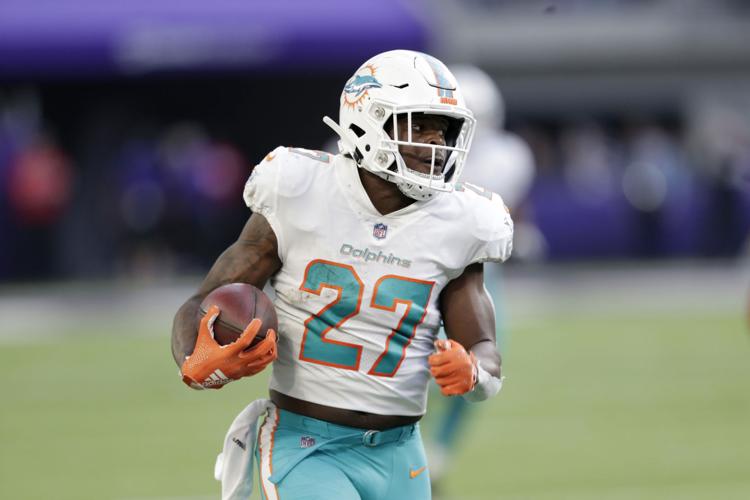

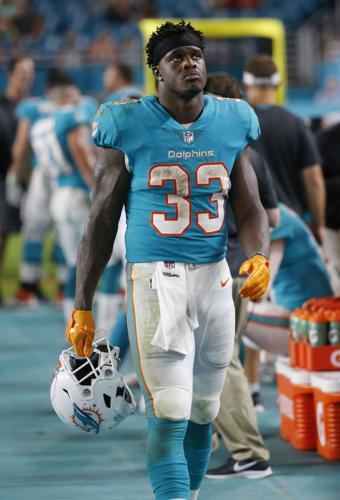






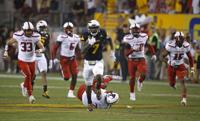

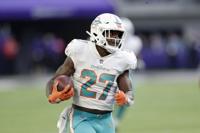

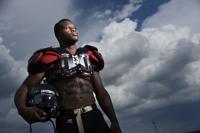


 Your Privacy Choices
Your Privacy Choices